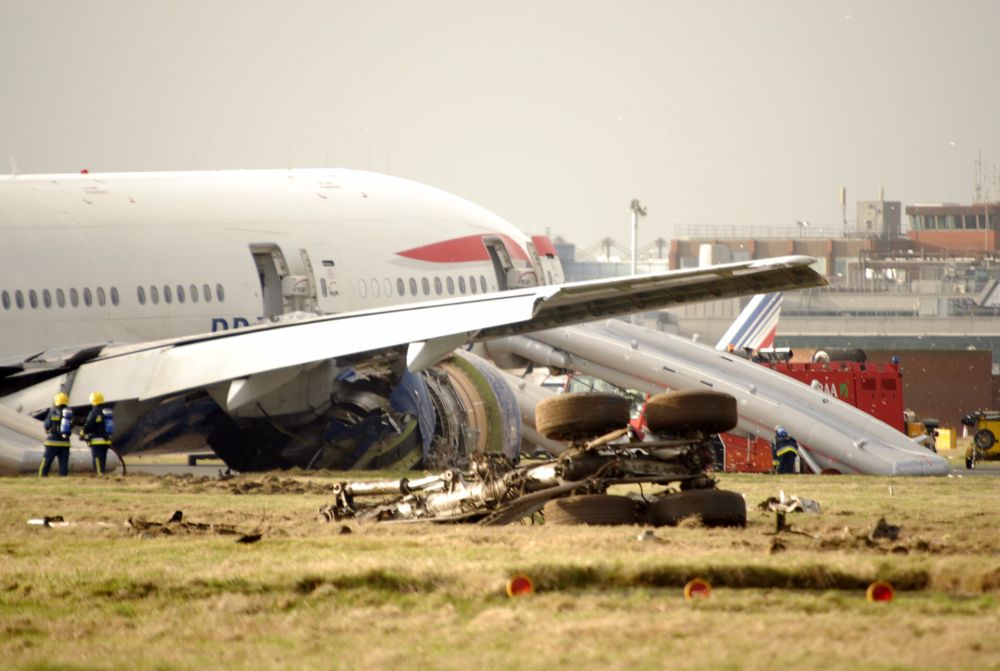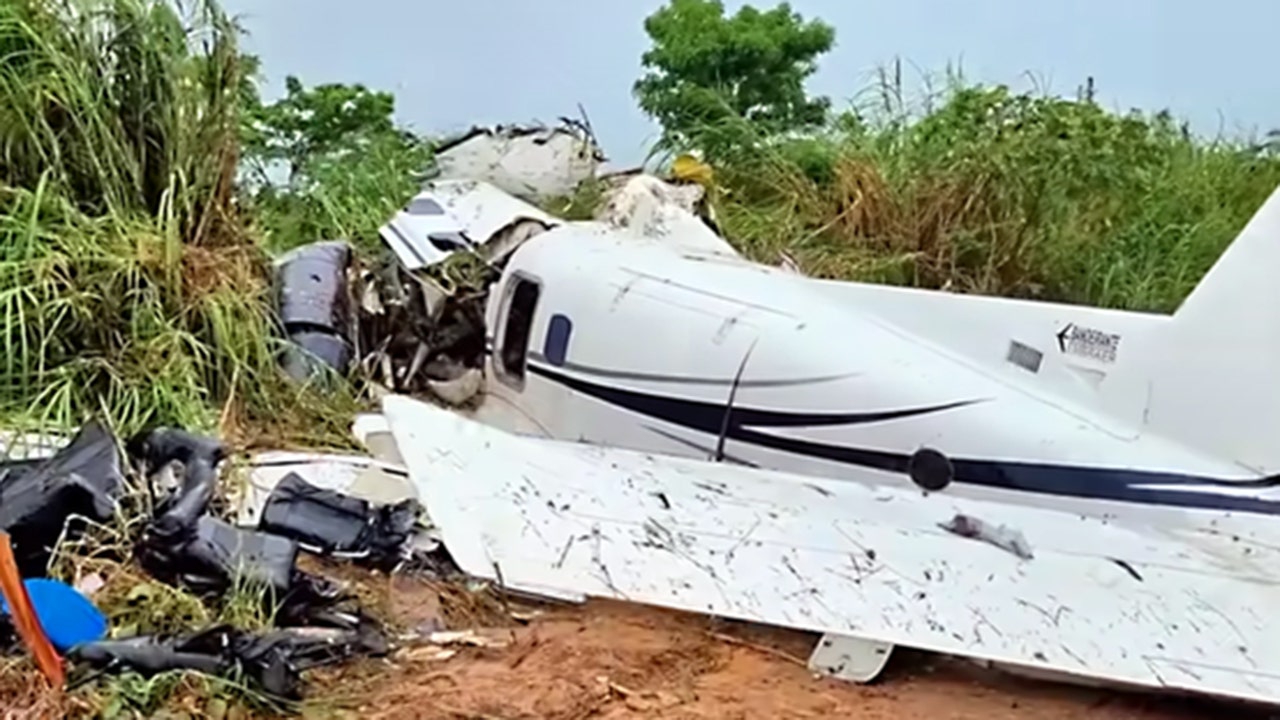Historical Overview of Flight Crashes in Brazil: Brazil Flight Crash

Brazil, with its vast geographical expanse and bustling aviation industry, has unfortunately witnessed a significant number of flight crashes throughout its history. These events have not only resulted in tragic loss of life but have also led to a continuous effort to improve aviation safety standards. This section explores the timeline of significant flight crashes in Brazil, examining their causes and impact, comparing safety regulations and standards to other countries, and tracing the evolution of safety measures and technologies in the Brazilian aviation industry.
Significant Flight Crashes in Brazil
The history of flight crashes in Brazil is marked by a series of tragic incidents that have shaped the country’s aviation safety landscape. Here is a timeline of some of the most notable crashes:
- 1946: Cruzeiro do Sul Flight 103: This crash, which occurred near São Paulo, claimed the lives of 24 passengers and crew members. The investigation revealed that the accident was caused by a combination of factors, including pilot error and mechanical failure. This event highlighted the importance of thorough pre-flight inspections and pilot training.
- 1961: Varig Flight 831: This tragic accident, which took place in the Atlantic Ocean, resulted in the loss of 73 lives. The investigation determined that the crash was caused by a mechanical failure in the aircraft’s engine, emphasizing the need for rigorous maintenance procedures and robust safety checks.
- 1973: Varig Flight 820: This crash, which occurred in Paris, France, claimed the lives of 123 passengers and crew members. The investigation revealed that the accident was caused by a fire that started in the aircraft’s cargo hold, highlighting the importance of fire safety measures and the need for strict cargo regulations.
- 1982: TAM Airlines Flight 352: This accident, which occurred in São Paulo, resulted in the loss of 99 lives. The investigation determined that the crash was caused by pilot error and a lack of communication between the pilot and air traffic control, underscoring the importance of effective communication and training in the cockpit.
- 2007: TAM Airlines Flight 3054: This crash, which occurred in São Paulo, claimed the lives of 199 passengers and crew members. The investigation revealed that the accident was caused by a combination of factors, including pilot error, runway conditions, and a lack of effective safety procedures, highlighting the need for stringent safety protocols and robust emergency response systems.
Safety Regulations and Standards in Brazil
Brazil’s aviation safety regulations and standards have evolved significantly over the years. However, the country’s aviation safety record has faced scrutiny, with some crashes highlighting the need for further improvements. Comparing Brazil’s safety regulations and standards to other countries, particularly those with established aviation industries, reveals some key differences:
- Enforcement of Safety Regulations: While Brazil has implemented robust safety regulations, the effectiveness of their enforcement has been a subject of debate. The country has faced criticism for inconsistent enforcement of safety rules and procedures, which can lead to vulnerabilities in the system.
- Aviation Infrastructure: The quality and maintenance of aviation infrastructure, including airports and air traffic control systems, play a crucial role in aviation safety. Brazil has made significant investments in upgrading its aviation infrastructure, but challenges remain in maintaining consistency across the country’s vast network.
- Pilot Training and Certification: Pilot training and certification standards are crucial for ensuring the competency of pilots. While Brazil has established pilot training programs, the quality and rigor of these programs have been subject to scrutiny, raising concerns about the level of pilot proficiency in the country.
Evolution of Safety Measures and Technologies
The Brazilian aviation industry has witnessed significant advancements in safety measures and technologies over the years. These developments have been driven by a combination of factors, including technological innovation, lessons learned from past accidents, and international best practices:
- Flight Data Recorders (FDRs) and Cockpit Voice Recorders (CVRs): These devices have become indispensable tools for investigating accidents, providing valuable insights into the events leading up to a crash. Brazil has mandated the use of FDRs and CVRs on commercial aircraft, contributing to a more comprehensive understanding of accident causes.
- Advanced Navigation Systems: The adoption of advanced navigation systems, such as GPS and satellite-based navigation, has significantly enhanced the precision and safety of air travel. These systems have improved the ability of pilots to navigate accurately, particularly in challenging weather conditions.
- Safety Management Systems (SMS): SMS is a proactive approach to aviation safety that focuses on identifying and mitigating risks. Brazil has implemented SMS in its aviation industry, encouraging airlines to adopt a systematic approach to safety management.
Impact of Flight Crashes on Brazilian Society and Economy

Flight crashes in Brazil have had a profound impact on the country’s society and economy, leaving behind a trail of grief, financial losses, and a lingering sense of insecurity. These incidents not only claim precious lives but also disrupt vital industries, erode public confidence, and necessitate significant investments in safety improvements.
Human Cost and Social Impact
Flight crashes in Brazil have resulted in significant loss of life, leaving families devastated and communities in mourning. The psychological impact of such tragedies extends beyond immediate victims, affecting the mental well-being of survivors, emergency responders, and the broader population.
Economic Impact of Flight Crashes, Brazil flight crash
The economic consequences of flight crashes in Brazil are far-reaching, affecting various sectors and impacting the country’s overall economic growth.
- Tourism Industry: Flight crashes can deter tourists from visiting Brazil, leading to a decline in revenue for the tourism sector. The loss of tourist confidence can significantly impact hotels, restaurants, and other businesses reliant on tourism revenue.
- Air Travel Industry: Following a major crash, airlines may experience a drop in passenger bookings, leading to financial losses and potentially impacting their long-term sustainability.
- Insurance Costs: Flight crashes can lead to significant insurance payouts, impacting the financial stability of airlines and insurance companies.
- Rescue and Recovery Operations: The costs associated with search and rescue operations, investigation, and accident site cleanup can be substantial, adding to the overall financial burden.
Government Responses and Initiatives
Recognizing the devastating impact of flight crashes, the Brazilian government and aviation authorities have implemented a range of measures aimed at enhancing safety and preventing future tragedies.
| Response/Initiative | Description |
|---|---|
| Enhanced Safety Regulations: | The Brazilian government has strengthened aviation safety regulations, including stricter requirements for aircraft maintenance, pilot training, and airport infrastructure. |
| Increased Oversight and Inspections: | Aviation authorities have increased the frequency and intensity of inspections of aircraft, airlines, and airports to ensure compliance with safety standards. |
| Investment in Technology: | The government has invested in advanced technologies to improve air traffic control, flight data monitoring, and aircraft safety systems. |
| International Cooperation: | Brazil actively collaborates with international aviation organizations and other countries to share best practices, exchange information, and enhance global aviation safety standards. |
The tragic Brazil flight crash serves as a stark reminder of the fragility of life and the importance of safety protocols. As we mourn the loss of lives, it’s also a time to reflect on the crucial role of leadership in ensuring the well-being of citizens, a topic that will undoubtedly be addressed during the upcoming presidential debate time.
The impact of such events on public policy and the need for effective crisis management will likely be key talking points, highlighting the vital connection between leadership and national safety.
The recent Brazil flight crash has shocked the world, highlighting the fragility of air travel. It’s a stark reminder of the importance of safety protocols and thorough inspections. The tragedy also compels us to reflect on the lives lost, like that of Linsey Davis , whose legacy of excellence in aviation will forever be remembered.
Such events serve as a solemn reminder of the human cost of accidents, urging us to learn from them and strive for a safer future in the skies.
